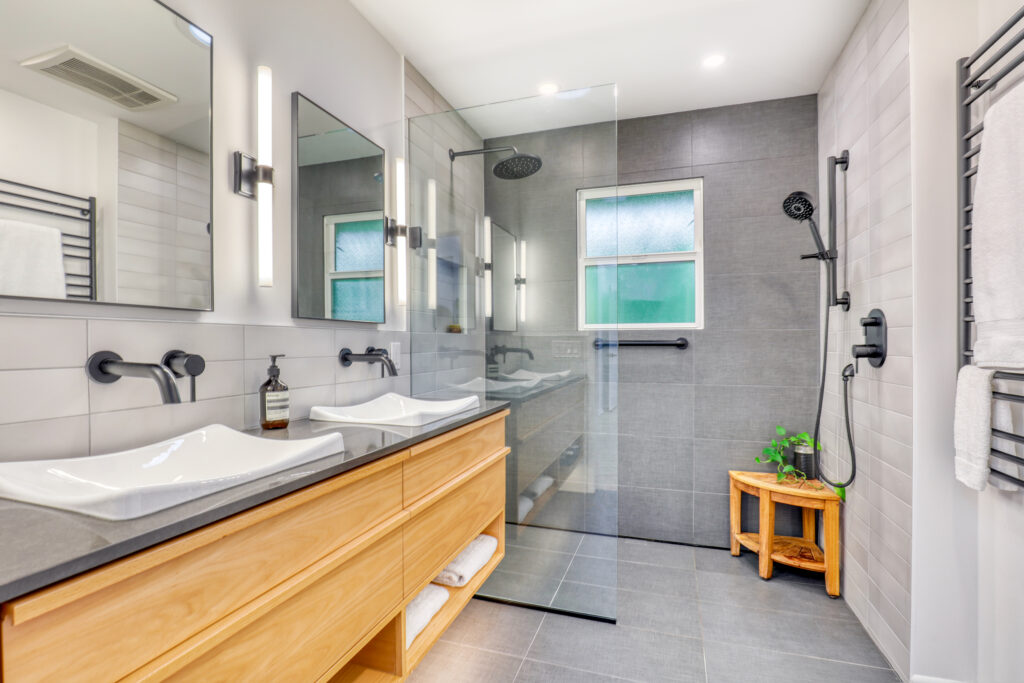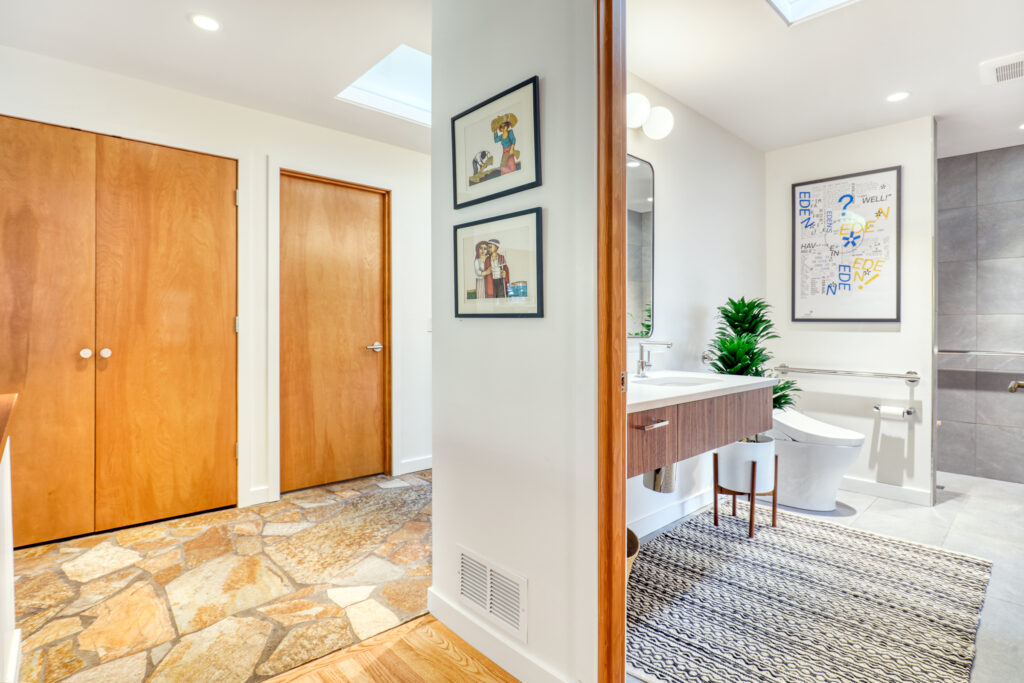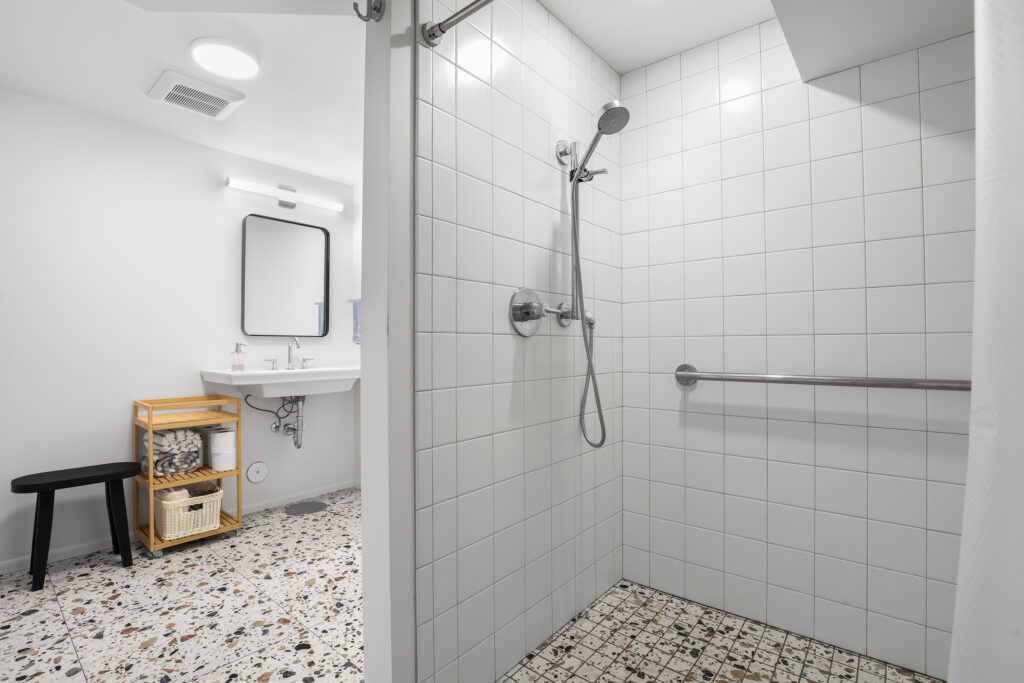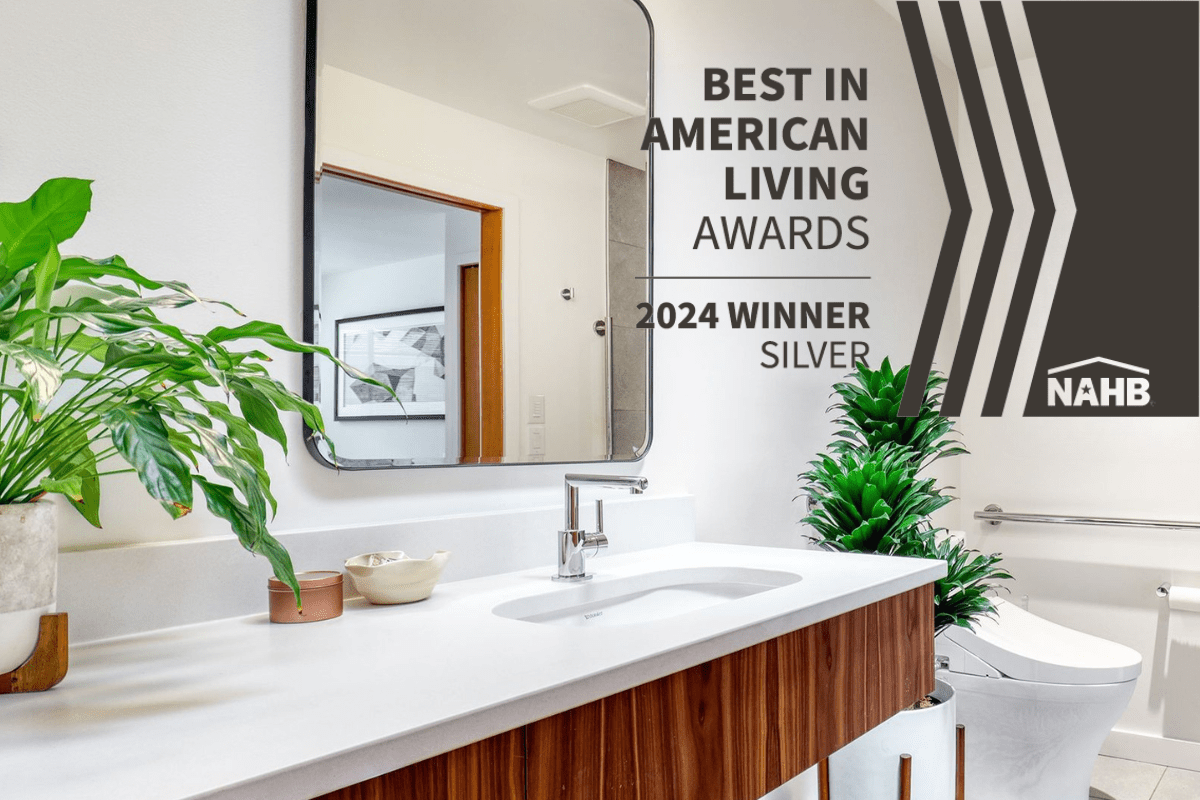
Thinking about how to prepare for your future? For many of us, living in our homes forever is the goal. But as we age, our needs start to shift and those shifts may become more obvious over time. Comfort, accessibility, and safety begin to take center stage and that’s where aging in place renovation comes in.
Also known as universal design, accessible home design, or adaptive remodeling, this concept isn’t just for seniors, it’s for anyone who wants to adapt their home to support safety and comfort outside of the traditional/pre-made building standards.
Rather than moving into a senior living community or assisted care facility, thoughtful design and smart upgrades can make aging in place not only possible, but quite visually appealing as well. Here are a few ways to create your dream “forever home”:
1. Wider Entryways
It may sound simple, but making doorways accessible often involves custom work. Wheelchairs and walkers need doorways to be at least 32 inches wide and able to open to a full 90-degree angle. Many standard interior doors range from 28–36 inches wide and may not open fully due to obstructions either from the build itself or furniture, etc.
Things to consider:
- Special hinges can help doors swing fully open and sit flush against the wall to achieve the full 90 degrees if you have a tighter space
- 32” is the absolute minimum, but wider is always better for easier movement throughout your entryways
- For exterior doors or backyard access, you may want to add no-step entries or ramps for safer navigation.

2. Bathroom Upgrades
Depending on your current setup, this could be a minor refresh or a full bathroom remodel. Traditional tubs aren’t usually friendly to aging-in-place needs, so curb-less, walk-in showers that are ADA-compliant (wide enough for mobility aids) are ideal.
Other bathroom considerations:
- Grab bars near toilets and inside showers for safety
- Non-slip tile and a hand-held showerhead
- Comfort-height toilets and accessible vanities for easier use

3. Kitchen Accessibility
Making a kitchen accessible can range from small DIY options to big structural changes. Here are some key upgrades:
- Widen kitchen entrances and ensure at least 42 inches between counters to allow space for wheelchairs or walkers to maneuver (including full 360-degree turns).
- Replace cabinet knobs with pulls or lever handles (Easier to grip onto)
- Use lever-style handles on faucets for easier grip
- Consider smart appliances with auto shut-off features for added safety and support for those with memory challenges
4. Additional Features to Consider
These options can make your home more livable now while supporting your needs in a few years time. If you’re planning ahead, these details can have a big impact:
- Voice-activated lights and thermostats (a great option if mobility is limited)
- Video doorbells and home security systems for safety concerns as you get older
- Slip-resistant flooring like cork, rubber, or luxury vinyl plank

When should you start building?
Even if you’re not facing mobility issues today, making these changes early can save you time, money, and stress in the future. Plus, many of these updates can boost your home’s resale value, especially buyers that look for accessible and inclusive homes.
If you start the process now, you can ensure that your home reflects your preferences, your style, and your comfort.
Want help figuring out what aging-in-place looks like in your home? Let’s talk.














